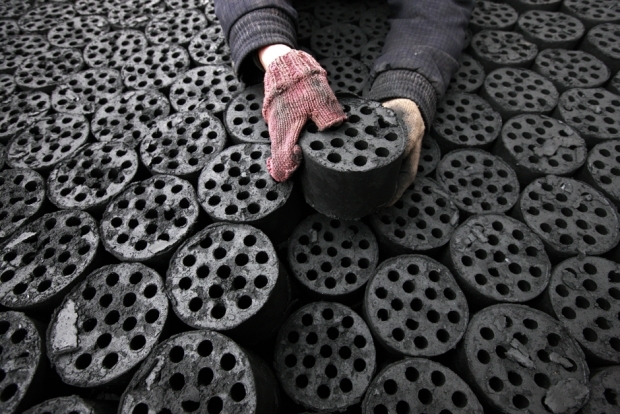In 2011, approximately 9,900 premature deaths in China are estimated to have been due to pollution. The Ministry of Environmental Protection recently released a pollution ranking of seventy-four cities over the first three months of the year. Of the ten most polluted, seven are in Hebei, with the provincial capital Shijiazhuang top of the list.
In May, Hebei and its neighbors Beijing and Tianjin reached air quality standards on only 27.4% of days, while 8.7% of days were classed as severely polluted (against a national average of 6.5%).
The region formed by Beijing, Tianjin, and Hebei is an air pollution disaster zone. Despite years of efforts by Beijing—it has done away with coal-burning power plants, exiled heavy industry, and its service sector now accounts for over 50% of the city’s economy—it cannot escape the impact of its neighbors.
According to Wang Yuesi, a researcher at the Chinese Academy of Sciences Institute of Atmospheric Physics, “imports” are the second biggest source of pollution in Beijing, and account for 19% of the city’s PM2.5 levels. Lei Yu, from the Chinese Academy of Environmental Planning, has said that between 10% and 30% of the pollutants in Beijing’s air come from Hebei—and even more under certain conditions.
In 2011, Hebei burned 307 million tons of coal, accounting for 80% of coal consumption in the Beijing-Tianjin-Hebei region. Outlook Weekly reporters found small refineries, smelting plants, and processors badly polluting the area around Beijing. CCTV’s economics channel recently broadcast a report from a village on the Hebei border where the villagers are all engaged in burning old shoes. In some places villagers choke on the fumes if they stop outside on a smoggy day.
A group of experts from the U.S. and Greenpeace have evaluated the harm to health caused by coal burning in the area. Their report, published on June 17, said that in 2011, the PM2.5 pollution from the area’s 196 coal-burning power plants caused about 9,900 premature deaths, as well as almost 70,000 hospital visits or stays. Hebei’s 152 coal-burning power plants account for 75% of premature deaths.
“Pollution from coal burning is an invisible killer. Hebei is responsible for 60% of the premature deaths in Beijing and Tianjin, but the province is also the biggest health danger within its own borders,” said Huang Wei, head of energy campaigns at Greenpeace.




